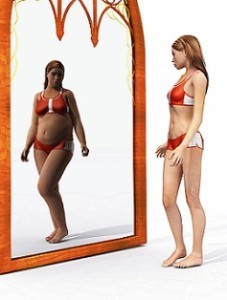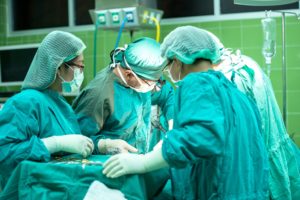- Calls to this hotline are currently being directed to Within Health or Eating Disorder Solutions
- Representatives are standing by 24/7 to help answer your questions
- All calls are confidential and HIPAA compliant
- There is no obligation or cost to call
- Eating Disorder Hope does not receive any commissions or fees dependent upon which provider you select
- Additional treatment providers are located on our directory or samhsa.gov
Body Dysmorphic Disorder, Cosmetic Procedures & Eating Disorders

Cosmetic procedures are on the rise within the United States [1]. According to research, individuals who seek cosmetic surgery is between 7-15% more common among those with Body Dysmorphic Disorder (BDD) [1].
Research focused on mental health issues, and body dysmorphic disorders show that individuals who have BDD tend to have higher levels of anger and hostility. These people also have lower levels of self-esteem and higher levels of perfectionism.
They also report 33% higher rates of childhood trauma and abuse in those with body dysmorphic disorder when seeking treatment [1].
Signs of Body Dysmorphic Disorder
When someone is experiencing body dysmorphic disorder, they may experience social isolation and avoid friends and family. When going out socially, they may wear an excessive amount of makeup or wear bulky clothing to try to hide perceived flaws [2].
Individuals may display signs of high anxiety, such as skin picking, hair pulling or plucking, and excessive grooming behaviors. Sufferers may also make comments about feeling self-conscious about their self-perceived flaws or continuously ask loved ones if the defect is noticeable.
Sufferers often will spend an excessive amount of time obsessing about one or two physical characteristics that they perceive as ugly. They may consult with plastic surgeons to attempt to correct the defect and may go through cosmetic surgery multiple times.
These people may also refuse to be in photographs and may obsessively compare themselves to others they see as ‘perfect.’ Features or body characteristics that individuals with BDD seem to obsess over are generally breasts, baldness, blemishes or acne, freckles or moles, nose, muscles size, genitalia, skin, or hair [2].
Body Image
Negative body image is a shared characteristic of both eating disorders and body dysmorphic disorders. Researchers at Brown Medical School state that those with anorexia tend to develop obsessive concerns around body parts similar to those who have BDD.

This can make the diagnosis of either disorder challenging as both have similar characteristics.
Negative body image is a symptom of BDD and eating disorders. A person may make multiple attempts to change their appearance. These shifts in appearance can be achieved through cosmetic surgery, which many individuals choose to do.
Trick of the Eye
One’s perception can affect how a person visualizes themselves externally. Thoughts about their body are normally distorted, and flaws are exacerbated into something they are not.
For many who struggle with BDD, it is a disorder that comes with shame, embarrassment, and self-loathing. Eating disorders and cosmetic surgery are a standard way to manage symptoms of BDD which can turn into a vicious cycle. Cosmetic surgery can increase the self-loathing and distorted body image [3].
In a BDD study by UCLA, there is an indication of dysfunction in the visual cortex. This dysfunction means that those with body dysmorphic disorder view themselves differently when they look in the mirror [3].
Cosmetic Surgery
A staggering $15 billion is spent annually on cosmetic surgery within the United States alone [4]. The top five cosmetic operations in 2016 were:
- Breast Augmentation
- Tummy Tucks
- Liposuctions
- Eyelid Surgery
- Breast lifts
The significant age group of those who received cosmetic surgery were between the ages of 30-50 [4]. It seems as if women are becoming more agreeable to the various surgical options available as they age. Women are tending to choose smaller surgical options, such as implants or facial lifts.
Men are not left behind. They are choosing cosmetic surgeries and account for 1 out of 10 procedures performed annually [4]. Men tend to prefer to ‘maintain’ their look, opting for laser hair removal, Botox injections, and chemical peels.
How Does This All Connect
Body Dysmorphic Disorder, Cosmetic Surgery, and Eating Disorders are all connected through a distorted body image and perceived flaws with one’s body parts.

The struggle is that cosmetic surgery will not solve the problem of either BDD or the eating disorder, it can exacerbate the issue even more. Seeking treatment that includes therapy, psychiatric management, nutritional consultation, and group support is the best option.
Through this pathway, the sufferer can work on their belief structure, thoughts, behaviors, and emotions that drive the disorders and move towards recovery.
If you or a loved one is struggling with BDD, an eating disorder, or a combination of the two, seek help. There are treatment professionals who can help you break free of the torment.

Libby currently works as a counselor at Fontbonne University and is an Adjunct Professor at Saint Louis University, and is a contributing author for Addiction Hope and Eating Disorder Hope. Libby lives in the St. Louis area with her husband and two daughters. She enjoys spending time with her family, running, and watching movies.
References:
[1] Sansone, R. A., & Sansone, L. A. (2007, December). Cosmetic Surgery and Psychological Issues. Retrieved January 31, 2018, from https://www.ncbi.nlm.nih.gov/pmc/articles/PMC2861519/[2] Counselor in Raleigh, NC | Cosmetic Surgery and Body Dysmorphic Diso… (2017, October 19). Retrieved February 03, 2018, from http://www.legacyfreedom.com/cosmetic-surgery-body-dysmorphic-disorder/
[3] The Impact of Eating Disorders on Body Image. (n.d.). Retrieved February 03, 2018, from https://www.bulimia.com/topics/body-image/
[4] Media – Statistics. (n.d.). Retrieved February 05, 2018, from https://www.surgery.org/media/statistics
The opinions and views of our guest contributors are shared to provide a broad perspective of eating disorders. These are not necessarily the views of Eating Disorder Hope, but an effort to offer discussion of various issues by different concerned individuals.
We at Eating Disorder Hope understand that eating disorders result from a combination of environmental and genetic factors. If you or a loved one are suffering from an eating disorder, please know that there is hope for you, and seek immediate professional help.
Published on March 23, 2018.
Published on EatingDisorderHope.com
